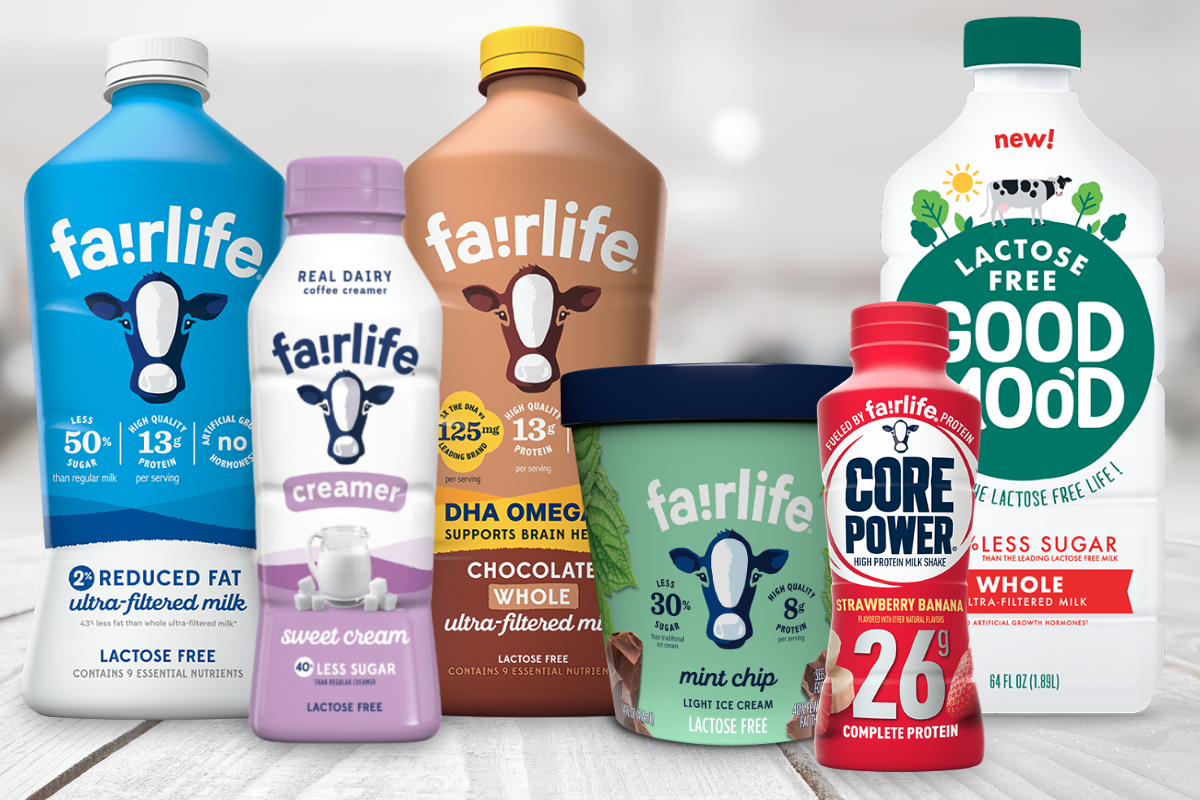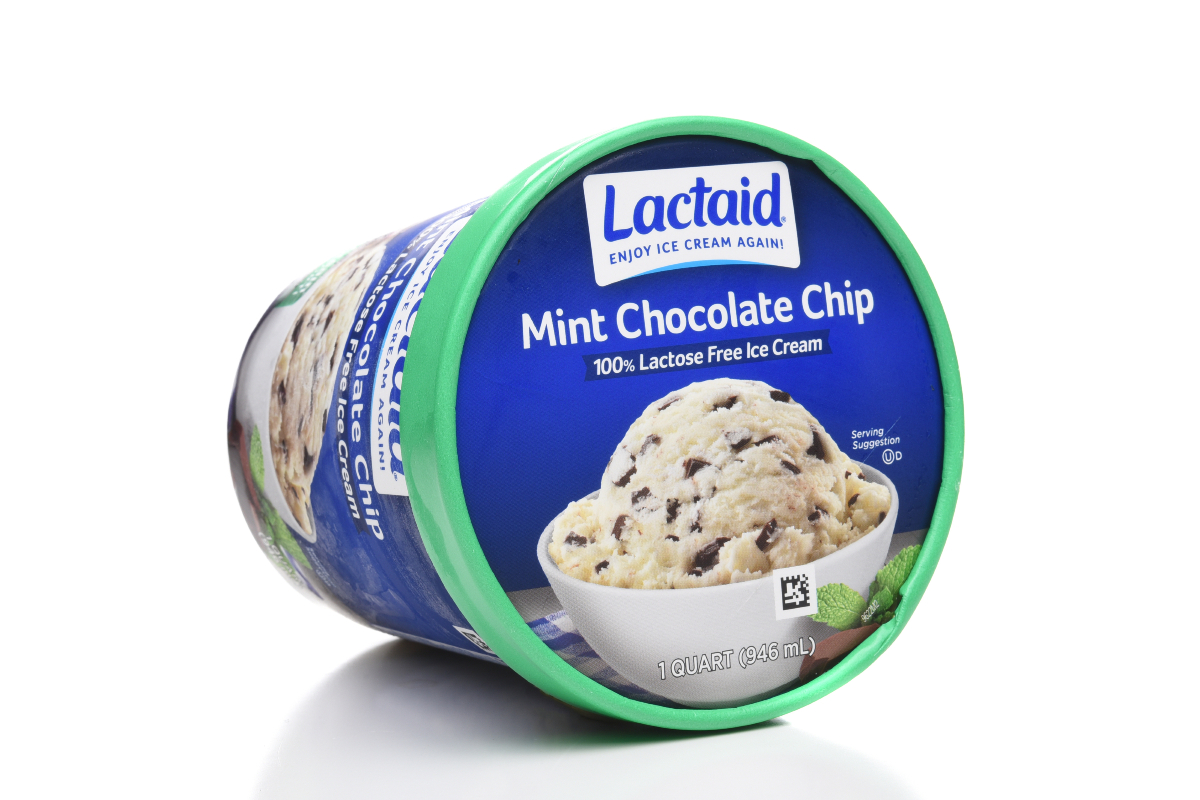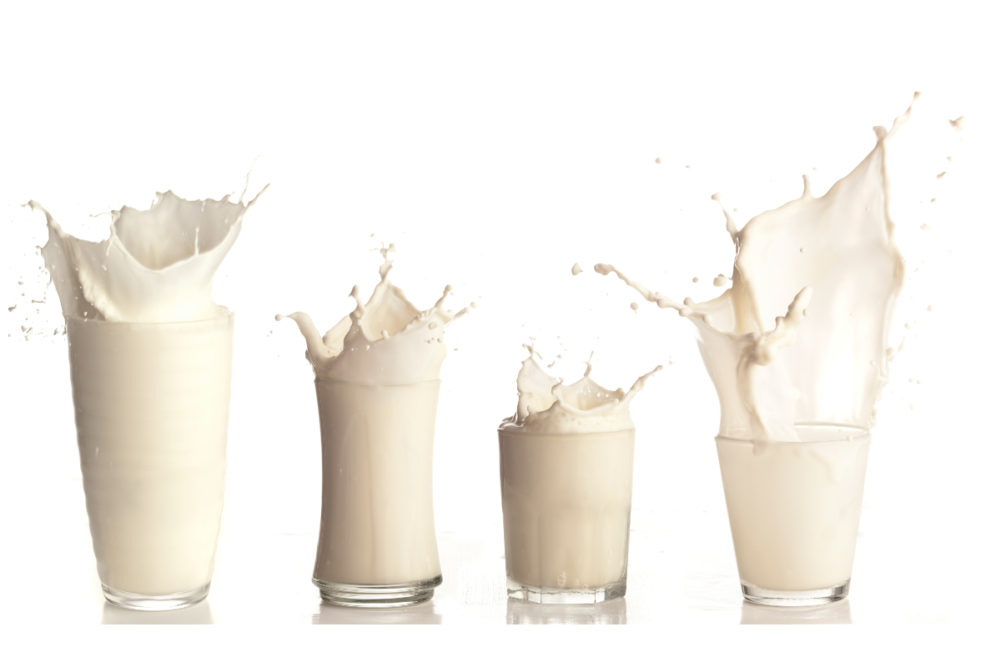According to the Dairy Alliance, lactose intolerance is the discomfort created by the inability to break down lactose, the natural sugar found in dairy foods. People have different levels of sensitivity to lactose and different levels of severity of symptoms, and this can further change as they age.
Choosing low-lactose or lactose-free products allows those with symptoms who love dairy to continue enjoying milk and other products.
“Lactose-free dairy foods are widely available and an increasingly popular option for Americans,” said Paul Ziemnisky, group executive vice president, head of wellness, insights and innovation, Dairy Management Inc. “Lactose-free milk is a great option and is available in about 95% of US retail food outlets. Importantly, lactose-free milk contains the exact same nutrients – all 13 – as regular milk, just without the lactose. The education and availability for lactose-free milk, supported by investment in new products and marketing, has yielded a multi-million-dollar milk segment.”
Dairy continues to lead retail with dollar sales and growth. It also supports a broader theme in dairy, Ziemnisky said, when investing in meeting consumer usage (cottage cheese is on fire), need states (snacking) and functional needs (drinkable yogurt), growth follows.
 Image: The Coca-Cola Co.
Image: The Coca-Cola Co. Product success
The success of fairlife, Darigold Fit and Lactaid have proven what is possible in the lactose-free category, according to Ziemnisky.
“The fairlife brand reached $1 billion in sales thanks to double-digit sales growth week-over-week,” he said. “It opened the door to make dairy more accessible to consumers who felt their only choice was to leave the category. What sometimes drives people to leave dairy is a misperception they have lactose intolerance. Fairlife and other innovative lactose-free products make it possible for people who love real dairy to stay in the category and not turn to dairy alternatives.”
Ziemnisky said innovation must continue to be an industrywide priority.
“The dairy checkoff has invested with companies to drive innovation and we also share research-based consumer insights across the industry,” he said. “We know that when it comes to consumers’ beverage choices, one of every two occasions is based on a health and wellness decision. Lactose-free dairy is a cost of entry for many people.”
According to Dr. Chris Cifelli, senior vice president of nutrition research for the National Dairy Council, the first thing to understand about lactose intolerance is that it’s often misunderstood.
“Some people may wrongly self-diagnose themselves as being lactose intolerant,” he said. “Others also confuse a food allergy with a food intolerance, mistakenly believing the allergy can be prevented or cured. This is why it’s always important to consult with a physician.”
A food allergy is completely different from an intolerance, Cifelli said.
“A food allergy involves an immune reaction and can lead to more serious symptoms like swollen airways,” he said. “Cow’s milk is among the eight food allergens – including eggs, peanut, tree nuts, wheat, soy, fish and shellfish – that account for most cases of food allergies in the United States. It is an immune reaction to the protein found in milk – casein – and could develop in infancy.”
Cifelli explained that cow’s milk allergy is a relatively common allergy in early childhood. In fact, he said, approximately 2 to 3% of infants in developed countries are reported to have it, but most children with a cow’s milk allergy will develop a natural tolerance or outgrow it by age 3.
“There is no simple test for diagnosing a food allergy, including to cow’s milk protein,” Cifelli said. “Instead, physicians use a combination of medical history, a food specific skin prick test, food specific serum IgE test and/or confirm using an oral food challenge. There is no treatment for a cow’s milk allergy other than eliminating cow’s milk and other dairy foods and ingredients from the diet. This can be difficult, so parents can benefit from counseling with a nutrition professional who can help them manage their child’s allergy, avoid adverse reactions and obtain recommended nutrients needed for growth and development.”
Parents of children diagnosed with a cow’s milk allergy should follow up with their doctor for repeat testing, Cifelli said.
“Once the allergy has resolved itself, dairy foods may be reintroduced back into the child’s diet as per the direction of their physician, and at the discretion of the parents,” he said. “Prolonged avoidance of dairy foods during the formative years has been linked to stunted growth, lower bone density and nutrient deficiencies. Milk is the top food contributor of 13 essential nutrients in the diets of American children 2-18 years old.”
As for lactose intolerance, milk and some other dairy foods naturally contain the sugar lactose. Some people lack the enzyme – or machinery – to digest the lactose, which can lead to numerous symptoms, such as bloating, gas and diarrhea, according to Cifelli.
“It is important to note that there are specific tests that doctors can administer to determine if you are suffering from lactose intolerance,” he said
Milk provides 13 essential nutrients – protein, calcium, phosphorus, zinc, selenium, iodine, potassium and vitamins A, D, B12, riboflavin (B2), niacin (B3) and pantothenic acid (B5) – which can be hard to replace with other foods and beverages.
 Photo: Steve Cukrov - stock.adobe.com
Photo: Steve Cukrov - stock.adobe.com“Concerns about lactose intolerance, whether real or perceived, can lead some people to avoid or reduce their dairy food consumption,” Cifelli said. “This could lead to a decreased intake of those essential nutrients and the health benefits associated with dairy intake. There are strategies and ways to get your dairy without causing digestive issues. First, try consuming smaller amounts of dairy throughout the day and with other foods. This can help individuals tolerate as much as 12 grams of lactose at a time, which is about the amount of lactose in one cup of milk.”
Cifelli emphasized that while individuals with lactose intolerance may choose to substitute milk with plant-based alternatives such as almond, rice and coconut beverages, these beverages vary in their nutrient composition, fortification levels and amounts of added sugars, as they are not subject to uniform standards.
“Importantly, other than soy beverage, no other alternative beverages are recommended by the 2020-2025 Dietary Guidelines for Americans (DGA) because they do not have similar nutrient profiles as milk,” he added. “The DGA notes that individuals with lactose intolerance can select lactose-free or reduced-lactose dairy foods to meet dairy recommendations.”
In terms of the production of lactose-free milk, Cifelli said some companies break down lactose, the natural sugar in milk, into its two simple sugars: glucose and galactose.
This makes it easier to digest for those who may not have enough lactase in their systems, he said. This is done by adding the lactase enzyme. Other milk companies may choose to filter out the lactose.
Leading the Way
As a trailblazer in the category, Lactaid was founded by Alan E. Kligerman, a third-generation dairyman who got his start in the business of delivering milk to customers in Atlantic City, NJ. During his routes, Kligerman discovered that not everyone could enjoy his family’s products due to lactose and set out to do something about it.
Kligerman went on to study dairy science at Cornell and founded Lactaid in 1974. Today, Lactaid brand products are still fulfilling his original mission to help people eat the foods they love wherever and whenever they want to – without discomfort.
HP Hood LLC started partnering on Lactaid milk production back in 1984, according to Lynne Bohan, HP Hood spokesperson. In 2001, Hood acquired the exclusive national licensee for the Lactaid dairy products portfolio from McNeil Pharmaceuticals. Since then, Hood has grown Lactaid milk to be the nation’s largest milk brand.
Lactaid breaks down the lactose from farm-fresh dairy milk using a natural lactase enzyme.
“The result is 100% real dairy milk, just without the discomfort, which means delicious dairy enjoyment for all,” Bohan said. “Lactaid offers a lactose-free milk for a variety of consumer needs. The brand includes calcium enriched milk, which provides 1.5 times more of the daily value of calcium compared to regular milk. Lactaid Protein gives consumers an added boost of protein with 13 grams of protein per serving.”
The lactose-free milk segment has consistently been the bright spot of the total dairy category year over year, providing 7.4% growth in the last three years, with Lactaid outpacing the segment with 12% growth, Bohan said.
“Two-thirds of the world population is sensitive to dairy,” she said. “By addressing a consumer need, lactose-free products retain dairy purchasers without them having to settle for alternatives when only real dairy will do.”
Starting with lactose-free milk, today the Lactaid brand includes a wide range of lactose-free dairy products, including milk, flavored milk, ice cream, cottage cheese, sour cream and eggnog.
In terms of future innovations in this category for Lactaid, Bohan said the brand will continue to lead the lactose-free milk segment and increase the ways consumers can enjoy delicious, real dairy without discomfort.
“Lactaid ice cream will continue to be a focus for the future – your taste buds can’t tell the difference, but your stomach can,” she said. “From traditional flavors like vanilla and chocolate to more current selections like salted caramel and chocolate chip cookie dough, there’s a delicious option for everyone. New exciting flavors for Lactaid ice cream are on the horizon for 2024 and beyond.”

